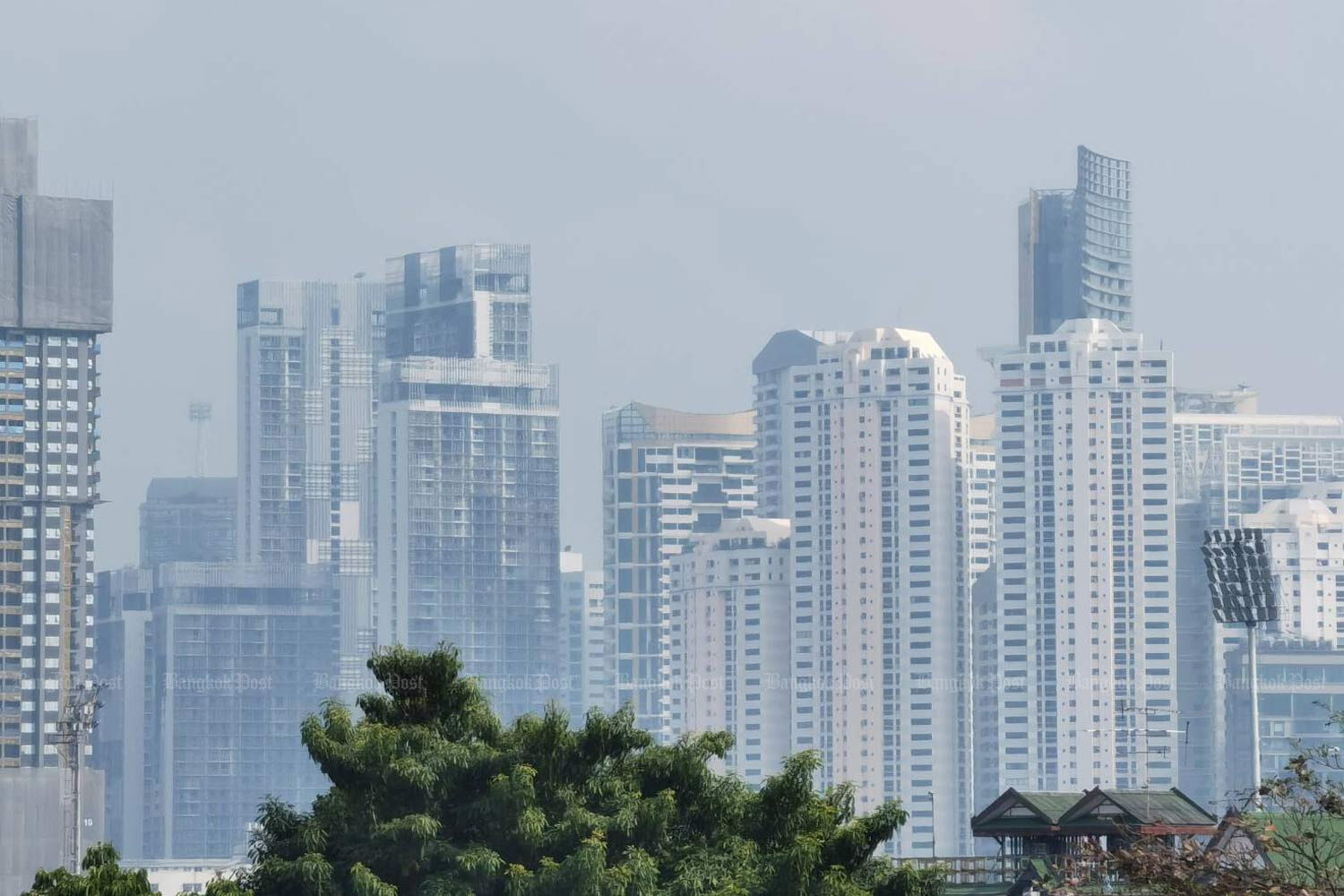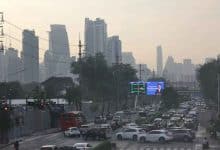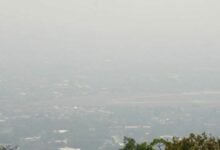Thailand sees improvement in air quality despite high PM2.5 levels

A sharp decline in air quality was observed across 33 provinces of Thailand this morning as dangerously high levels of ultrafine dust posed health risks. This, however, was an improvement from yesterday morning, when air pollution blanketed 47 provinces. The peak pollution level also saw a drop.
The Geo-Informatics and Space Technology Development Agency (GISTADA) revealed this morning that five provinces in the Central Plain were engulfed by red levels of particulate matter 2.5 micrometres and less in diameter (PM2.5), a decrease from 15 provinces yesterday morning.
These red-code levels, which are seriously harmful, ranged between 75.7 and 95.2 microgrammes per cubic metre of air in the past 24 hours, down from 78.6-134.8µg/m³ yesterday. This is considerably above the government’s safe threshold of 37.5µg/m³.
This morning, Samut Sakhon province recorded the highest PM2.5 level at 95.2µg/m³, closely followed by 86.3µg/m³ in Nakhon Pathom, 83.1µg/m³ in Rayong, 75.8µg/m³ in Bangkok and 75.7µg/m³ in Samut Prakan, reported Bangkok Post.
In addition, 28 other provinces in the Central Plain were enveloped with orange levels of PM2.5 ranging from 37.7 to 71.9µg/m³. This indicates that the PM2.5 levels had started to affect health. These provinces were, in ascending order of PM2.5 levels, Nakhon Ratchasima, Phichit, Sa Kaeo, Nan, Kamphaeng Phet, Lop Buri, Lamphun, Uttaradit, Uthai Thani, Phetchabun, Ayutthaya, Phitsanulok, Nakhon Nayok, Saraburi, Tak, Prachin Buri, Chanthaburi, Sukhothai, Prachuap Khiri Khan, Samut Songkhram, Suphan Buri, Kanchanaburi, Chachoengsao, Phetchaburi, Pathum Thani, Ratchaburi, Chon Buri, and Nonthaburi.
On the other hand, 44 provinces reported safe levels, the majority of these being in the north, south and northeast. The lowest level of PM2.5, recorded at 9.0µg/m³, was in the northeastern province of Yasothon, succeeded by 9.7µg/m³ in Amnat Charoen, 12.3µg/m³ in Si Sa Ket and 13.2µg/m³ in Surin, all located in the northeast.
Discussing the cause of high PM2.5 levels in the Central Plain, Pansak Thiramongkol, Director for Air and Noise Quality Management at the Pollution Control Department, explained this morning that it was primarily due to the burning of harvest waste in paddy fields in preparation for the next crop.
Latest Thailand News
Follow The Thaiger on Google News:


























